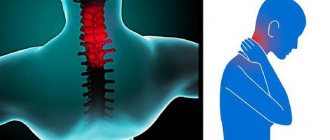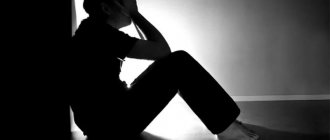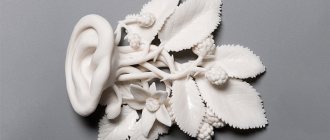Many people, regardless of age and social status, complain of discomfort and tension in the head. An unpleasant condition interferes not only with normal work and household chores, but also with restful sleep. Why does such a disorder occur and how to get rid of it?
Almost all people are susceptible to stress and may experience unpleasant emotions when communicating. If a person has to live for a long time in uncomfortable conditions, constantly experiencing negativity, then sooner or later the nervous system will fail. In addition, vascular diseases, tension headaches, and constant muscle strain may occur. To understand the reasons for the malaise, you need to consult a doctor. He will prescribe appropriate treatment and give recommendations.
Causes of tension
Constant tension and pain in the head can be caused by:
- Neurotic conditions, neurosis.
- Regular strain of the neck muscles.
- Disorder in the functioning of cerebral vessels.
- Overwork.
It is very important to identify the causes of tension in time and get rid of them. Otherwise, it can develop into severe neurosis. Experts note that unpleasant sensations in the head are both primary and secondary in nature.
With vegetative-vascular dystonia, victims complain of tension, pressure from inside the head, surges in blood pressure, increased sweating, hand tremors, and intestinal problems. This condition can occur in both children and adults. The cause of the development of pathology can be overwork, poor nutrition, hormonal imbalance, and cervical osteochondrosis.
Elderly people with cerebral atherosclerosis and hypertension also experience headaches. Here you can help patients by curing the underlying disease.
Secondary tension headaches can occur with:
- Sinusitis.
- Osteochondrosis of the neck.
- Eye diseases.
- Myositis.
Tension in the head and neck area can occur when a person holds an uncomfortable position for a long time. The neck muscles become overstrained, vascular spasm occurs, and pain impulses are sent to the brain. Then headaches are added to the tension.
There is another cause of discomfort - neurosis. In this condition, a person loses the ability to tolerate stress and control emotions. The nervous system is gradually depleted, which causes problems of both mental and neurological nature.
Methods for diagnosing tension-type headache
Before treating a tension headache, the causes are identified, a diagnosis is made, the symptoms are compared, and treatment is prescribed that is appropriate to the established diagnosis.
The patient is necessarily asked about the nature of his professional activity, how long the pain has been tormented, whether it gets worse, and at what time of day the pain increases. A patient who cannot explain how long he has been suffering from an illness and what provokes attacks is recommended to keep a diary and record all changes over a certain period of time. Entries in the diary should contain the following content: date, time: headache after a hard day, pain in the back of the head, worsens with loud sounds. After 2 hours, the headache subsided as a result of taking the analgesic.
Symptoms
In neurotic disorders, the following types of pain are distinguished:
- Neuromuscular . It causes a feeling of compression of the skull.
- Neurovascular. Has a pulsating character.
With regular muscle strain, the disorder manifests itself:
- Heaviness in the head.
- Tightness of the neck muscles.
- Soreness of the scalp.
The pain is intense and affects the entire head. The attack can last quite a long time. The victim, due to a sore head, does not know how to relieve tension and distract himself from the discomfort. It is difficult for him to do any work, his memory and attention noticeably deteriorate.
If the main cause of tension is problems with the cerebral vessels, then the following occurs:
- Painful sensations in the temples, frontal and occipital parts.
- Noise, ringing in the ears.
- Lethargy.
- Sensation preceding vomiting.
If an attack flares up for no apparent reason, then it is probably triggered by severe overwork. Such pains have no localization and specific symptoms. Since this pain is of a psycho-emotional nature, it is classified as a neurotic condition.
Patients with neurosis experience:
- Increased sweating.
- Frequent heartbeat.
- Appetite disorders.
- Dizziness.
- Anxiety.
- Unreasonable fear.
- Fast fatiguability.
- Mood swings.
- Tearfulness.
- Dyspnea.
- Numbness of the limbs.
Interestingly, dizziness during neurosis has nothing to do with the functioning of the body. The dependence of its occurrence on the emotional state has been proven. Psychogenic dizziness begins with depression, panic attacks, and phobias.
Reduced severity of physiological symptoms
The listed signs manifest themselves differently in each patient.
For some, neurosis is accompanied by only a few symptoms of the listed manifestations, and some note almost all of the listed changes in their body.
Among the common symptoms, patients note headache, nausea, dizziness, tension in the body and head.
Tension in the body
This is the main companion of the disease.
Neurotic disorders are almost always accompanied by muscle tension.
This phenomenon occurs for both physiological and psychological reasons.
In the human body, an uneven distribution of muscle load occurs, and dystonic reactions appear.
Some researchers argue that tension in any part of the body is associated with specific psychological problems.
For example, a feeling of hostility towards others leads to tension in the arm muscles.
Increased muscle tone in the thighs and pelvis in adulthood is caused by sexual problems.
Tension in the head during neurosis is caused by deep emotions, unresolved conflicts, and low self-esteem of a person.
Psychological problems are very closely related to somatic manifestations.
That is why it is necessary to get rid of this symptom as part of a set of measures to overcome a neurotic disorder.
Exercise helps relieve tension
With neurosis, constant tension in the body is treated not only with medications, but also with active use of physical exercises.
They are prescribed depending on which muscles cannot relax.
The following would be appropriate here:
- relaxation massages;
- various water treatments;
- medications for severe symptoms;
- working with a psychologist, psychotherapist to solve the cause of muscle tightness.
Nausea with neurosis
Not all doctors associate this symptom with psychological problems.
Only experienced gastroenterologists or therapists refer the patient for a consultation with a psychotherapist or neurologist when experiencing nausea.
Nausea with neurosis can last from several hours to several days.
And it should not be associated with low-quality food and take sorbents or bacteria for the intestinal flora - there will be absolutely no result.
Constant nausea in neurosis is often observed with a feeling of disgust towards an object, person or activity, if the patient has accumulated grievances, he is dissatisfied with his life, his health or appearance. Constantly interacting with what a person considers unworthy or bad, neurosis will manifest itself through the main symptom - nausea.
There are two treatment options:
- reducing the severity of symptoms , short-term techniques using antipsychotics or antidepressants;
- long-term psychotherapy aimed at eliminating not only the symptom, but also the causes of neurosis.
Dizziness with this disease
It is enough to associate this phenomenon with the pathology of the nervous system, since dizziness during neurosis is not always accompanied by problems with internal organs.
A person may complain of weakness and dizziness, although when tested, all results will be within the normal range; blood pressure measurements will also not show any pathology.
In this case, we can safely say that the symptom is caused by psychogenic causes.
Dizziness occurs with depression, panic attacks, vegetative-vascular dystonia, phobias, and anxiety.
It is complemented by noise in the head, increased irritability and sleep disorders.
With dizziness of a psychogenic nature, it is impossible to cure a person of them without the use of psychotherapeutic techniques.
Dizziness may be a symptom of vestibular weakness
If dizziness is accompanied by hearing problems and gait disturbances, then we may be talking about disturbances in the functioning of the vestibular apparatus.
In this case, an ENT doctor provides assistance.
With changes in blood tests and examinations of the cardiovascular system, dizziness is caused by neurological or vascular diseases.
A doctor working with a patient cannot immediately diagnose psychogenic dizziness, so first a negative diagnosis should be made - eliminating the physiological causes of the symptom.
In the treatment of dizziness due to neurosis, medications, special gymnastics and breathing exercises, as well as psychotherapeutic techniques are used.
Headache due to neurosis and its causes
Headache is a faithful companion of neurasthenia and hysteria, but it is practically not observed in obsessive-compulsive neurosis.
This symptom does not occur immediately after a stressful situation, but after a certain period of time, after the development of other symptoms, for example, sleep or appetite disorders.
Headache with neurosis manifests itself differently depending on the location of pain and the human organs involved.
Worth seeing: Muscle tension in neurosis
It develops due to:
- Muscle “clamps”.
- Disturbances in the functioning of cerebral vessels.
- Without disruption of muscles and blood vessels.
As a result of this classification, the symptoms of headaches with neurosis will be slightly different.
Neuromuscular pain is accompanied by:
- feeling of squeezing of the head;
- numbness of some parts of the surface of the head;
- sensation of pain on the skin surface of this part of the body;
- a person feels constant tension in the head, which interferes with mental processes: it is difficult to remember something, concentrate attention, or decide.
The neurovascular nature of pain will be expressed through the following symptoms:
- throbbing pain in the head;
- pulsation constantly focuses a person’s attention on pain, he cannot perform any complex mental work;
- often localized in the temporal region, occipital and frontal;
- accompanied by nausea and weakness.
Headache without muscle tension and pulsation in a neurotic disorder occurs after overwork.
It does not have a clear localization, and it is difficult to understand the nature of the pain.
Its occurrence is associated with psycho-emotional experiences, so it is classified as neurotic symptoms.
Overwork can also cause headaches
Classification and signs of nervous tension
In order to respond to your body’s signals in a timely manner, you need to know what types of tension there are.
- Light . Occurs in most people. During the day a person faces many problems. He gets irritated, angry, and remembers something unpleasant when meeting people he doesn’t like. But pleasant events quickly erase obsessive thoughts from memory, and the mood improves.
- Increased . Noticeably takes away the patient's strength. At the same time, an unsuccessful solution to some complex problem, experiencing stress, as well as constant mental work (for example, in people involved in serious business or politics) can cause an uncomfortable feeling.
- Strong . Has a negative impact on the patient's psyche. Signs of neurosis, dizziness and other symptoms appear, including loss of appetite, cephalgia, weakness, lethargy.
A person experiencing nervous tension experiences:
- Stiffness.
- Overexcitement.
- Aggression.
- Nervousness.
If the feeling of tension does not go away on its own, the sensations intensify, you need to take all possible measures to eliminate the disorder.
Diagnostics
A pediatric neurologist treats tension pain in the head in children. If the problem occurs in an adult, he needs to contact a neurologist. After collecting anamnesis and examining the patient, the doctor can send him for diagnostics:
- X-ray of the neck.
- Computed or magnetic resonance imaging.
- Rheoencephalography.
- Ultrasound examination of blood vessels.
The main thing is to find the root cause of the disorder in order to get rid of unpleasant symptoms.
Drug treatment
Patients seek medical help to relieve tension and headaches. If the problem is not related to vascular disease, ENT pathologies, osteochondrosis, myositis, then doctors prescribe to improve the condition:
- Antispasmodics that relieve spasms (Spazmalgon).
- Sedatives (tincture of motherwort, peony and valerian).
- Medicines that relieve anxiety and enhance brain function (Glycine, Pantogam).
- Vitamin complexes that strengthen and tonify a weakened body.
Only a doctor can prescribe a drug, determine the dosage and course of treatment. You should not take medicine without recommendations, as even the most harmless drug can cause side effects. Uncontrolled use of antispasmodics and analgesics causes severe headaches. It turns out that a person, wanting to relieve cephalalgia, provokes it himself. In such cases, the clinical picture is blurred - it will be difficult for the doctor to make an accurate diagnosis and prescribe competent treatment.
Neurosis: How to relieve constant tension in the head
When treating this symptom, an integrated approach is used that helps reduce its intensity and remove the cause of the neurotic disorder. Several types of assistance are used for this.
In life, a person faces various situations that strain his nervous system: there is no way to respond to grievances, fear arises due to a lack of a sense of security, it is not possible to implement plans, and so on. All conflict situations and shocks do not remain without a trace in the body. As a result of the action of psychotraumatic factors, a person develops the disease neurosis. It begins almost imperceptibly and manifests itself differently in everyone. Symptoms and external manifestations of the disease depend on the duration of the traumatic situation, its severity and individual reaction to it.
What is neurosis? Neurosis is a disease in which a person loses the ability to cope with stressful situations. The body’s defenses and the formed psychological adaptation “break down” in this state, leading to exhaustion of the nervous system. This disease affects not only the psyche and the nervous system; a person often notices a malfunction of an internal organ or prolonged pain.
Strong neurosis does not go unnoticed from the outside either. People around note increased irritability and deterioration in the physical condition of a person suffering from this disease.
Causes of the disease An interesting fact is that not only situations associated with the loss of something close can lead to neurosis. The cause of the disease can also be a bright, joyful event, for example, the birth of a child, a wedding, or the start of studies at the desired college or university. Neurosis often occurs in melancholic and choleric people. These types of temperament are characterized by emotional instability, so typical melancholic and choleric people have a more difficult time experiencing traumatic situations. Physical and psycho-emotional stress ultimately lead to this nervous pathology. If a person constantly works or studies and does not have enough time for relaxation and rest, he is at risk. Especially with accompanying problems in your personal life, the development of neurosis cannot be avoided. With long-term or intense somatic illnesses, psychological problems associated with the inability to finish the work started, symptoms of severe neurosis also appear.
How does this disease manifest itself? A neurotic disorder of the nervous system necessarily leads to detrimental consequences for the body and social activity of a person. It can cause neurosis, nausea, dizziness, constant headaches, increased conflict, irritability, and disability. That is why, when neurosis manifests itself, you need to solve the problem, and not hope for its independent disappearance.
The main manifestations of the disease include:
headaches of various types; numbness of the limbs; dizziness; various types of sleep disorders; a person cannot relax if he wants to; increased irritability; the patient does not feel joy and happiness, he is constantly depressed; restlessness, anxiety; decrease in cognitive functions, intellectual abilities; fast fatiguability; pain in internal organs, in the limbs, without obvious reasons; decreased labor productivity; mood swings; tearfulness; touchiness; “getting stuck” in a stressful situation; the body's sensitivity to temperature changes and bright light; disorders of the autonomic nervous system: sweating, rapid heartbeat, fluctuations in blood pressure, problems with the stomach; decreased sex drive; decrease in the intensity of volitional impulses; dyspnea; dark spots when closing or opening the eyes, the condition is accompanied by dizziness; decreased appetite, inability to form a bolus due to insufficient amount of saliva in the mouth; the appearance of a feeling of fear without a threatening factor. Reducing the severity of physiological symptoms The listed signs manifest themselves differently in each patient. For some, neurosis is accompanied by only a few symptoms of the listed manifestations, and some note almost all of the listed changes in their body. Among the common symptoms, patients note headache, nausea, dizziness, tension in the body and head.
Tension in the body This is the main companion of the disease. Neurotic disorders are almost always accompanied by muscle tension. This phenomenon occurs for both physiological and psychological reasons. In the human body, an uneven distribution of muscle load occurs, and dystonic reactions appear.
Some researchers argue that tension in any part of the body is associated with specific psychological problems. For example:
Feelings of hostility towards others lead to tense arm muscles. Increased muscle tone in the thighs and pelvis in adulthood is caused by sexual problems. Tension in the head during neurosis is caused by deep emotions, unresolved conflicts, and low self-esteem of a person. Psychological problems are very closely related to somatic manifestations. That is why it is necessary to get rid of this symptom as part of a set of measures to overcome a neurotic disorder.
With neurosis, constant tension in the body is treated not only with medications, but also with active use of physical exercises. They are prescribed depending on which muscles cannot relax. The following would be appropriate here:
relaxation massages; various water treatments; medications for severe symptoms; working with a psychologist, psychotherapist to solve the cause of muscle tightness. Nausea with neurosis Not all doctors associate this symptom with psychological problems. Only experienced gastroenterologists or therapists refer the patient for a consultation with a psychotherapist or neurologist when experiencing nausea. Nausea with neurosis can last from several hours to several days. And it should not be associated with low-quality food and take sorbents or bacteria for the intestinal flora - there will be absolutely no result.
Constant nausea in neurosis is often observed with a feeling of disgust towards an object, person or activity, if the patient has accumulated grievances, he is dissatisfied with his life, his health or appearance. Constantly interacting with what a person considers unworthy or bad, neurosis will manifest itself through the main symptom - nausea.
There are two treatment options:
reducing the severity of symptoms, short-term techniques using antipsychotics or antidepressants; long-term psychotherapy aimed at eliminating not only the symptom, but also the causes of neurosis. Dizziness with this disease It is enough to associate this phenomenon with the pathology of the nervous system, since dizziness with neurosis is not always accompanied by problems with internal organs. A person may complain of weakness and dizziness, although when tested, all results will be within the normal range; blood pressure measurements will also not show any pathology. In this case, we can safely say that the symptom is caused by psychogenic causes.
Dizziness occurs with depression, panic attacks, vegetative-vascular dystonia, phobias, and anxiety. It is complemented by noise in the head, increased irritability and sleep disorders. With dizziness of a psychogenic nature, it is impossible to cure a person of them without the use of psychotherapeutic techniques.
If dizziness is accompanied by hearing problems and gait disturbances, then we may be talking about disturbances in the functioning of the vestibular apparatus. In this case, an ENT doctor provides assistance. With changes in blood tests and examinations of the cardiovascular system, dizziness is caused by neurological or vascular diseases. A doctor working with a patient cannot immediately diagnose psychogenic dizziness, so first a negative diagnosis should be made - eliminating the physiological causes of the symptom.
In the treatment of dizziness due to neurosis, medications, special gymnastics and breathing exercises, as well as psychotherapeutic techniques are used.
Headache in neurosis, causes Headache is a faithful companion of neurasthenia and hysteria; it is practically not observed in obsessive-compulsive neurosis. This symptom does not occur immediately after a stressful situation, but after a certain period of time, after the development of other symptoms, for example, sleep or appetite disorders.
Headache with neurosis manifests itself in different ways, depending on the location of pain and the human organs involved. It develops due to:
Muscle “clamps”. Disturbances in the functioning of cerebral vessels. Without disruption of muscles and blood vessels. As a result of this classification, the symptoms of headaches with neurosis will be slightly different.
Neuromuscular pain is accompanied by:
feeling of squeezing of the head; numbness of some parts of the surface of the head; sensation of pain on the skin surface of this part of the body; a person feels constant tension in the head, which interferes with mental processes: it is difficult to remember something, concentrate attention, or decide. The neurovascular nature of pain will be expressed through the following symptoms:
throbbing pain in the head; pulsation constantly focuses a person’s attention on pain, he cannot perform any complex mental work; often localized in the temporal region, occipital and frontal; accompanied by nausea and weakness. Headache without muscle tension and pulsation in a neurotic disorder occurs after overwork. It does not have a clear localization, and it is difficult to understand the nature of the pain. Its occurrence is associated with psycho-emotional experiences, so it is classified as neurotic symptoms.
How to get rid of neurotic headaches? It is important for patients with a neurotic disorder to know how to relieve tension and pain in the head during neurosis, because their livelihoods depend on it. When treating this symptom, an integrated approach is used that helps reduce its intensity and remove the cause of the neurotic disorder. To achieve this, several types of patient assistance are used.
Medication Assistance With neuroses, pain in the head can be simply unbearable. A constant feeling of heaviness, constriction and increased severity of pain leads to a deterioration in the patient’s psycho-emotional state. He becomes irritable, gets tired quickly, and does not want to use anything for food, since the chewing process also causes pain. To solve this problem, it is necessary to use medications to get rid of headaches. To do this, the doctor prescribes:
sedative herbal preparations (Valerian, Peony Tincture, preparations with motherwort, Nervo-Vit); painkillers that relieve muscle or vascular spasm (Spazmolgon, Riabal, Novigan, various analgesics and others); vitamins to support the functioning of the heart and nervous system (various vitamin complexes with vitamins C, group B, magnesium, iron and other microelements); nootropics and anti-anxiety drugs (Glycised, Glycine, Nootropil, Pantogam), they have a good effect on brain function and normalize sleep, but the dosage and course of administration are determined only by a doctor. Psychotherapeutic assistance Psychological techniques are used not only to treat headaches, but also to get rid of the causes of neurosis. Cognitive behavioral therapy is actively used, hypnosis is an effective assistant, and it is also important to use positive therapy methods to restore a person’s psycho-emotional sphere. Long-term work with a psychologist or psychotherapist is required.
Changing your lifestyle Often a person causes himself to develop neurotic headaches by exposing himself to unbearable mental or physical stress.
To avoid the development of this symptom into pathology, the restoration of the body's strength is required: healthy sleep, work and rest regime, you can help yourself by using aromatherapy, therapeutic exercises, doing massages, water procedures, tuning into the positive and learning positive thinking.
Follow us on VKontakte, Odnoklassniki
other methods
Experts are confident that most tension pains are associated with neuroses, which means that psychology and psychiatry can help get rid of headaches. These techniques allow not only to relieve symptoms, but to eradicate the very root cause of the disease. Working with the patient is aimed at helping him relieve tension and focus his attention on something else.
If the victim has tension in the body, which is considered a companion to neurosis, then the best medicines for it are physical exercise and relaxation massage.
Tension in the head associated with somatic manifestations is removed:
- Water procedures.
- Massages.
- Medicines for severe syndrome.
You can help yourself with simple exercises: place your hands on your neck and press forward until you feel tension in your shoulders. Alternately pressing, lower your arms, and then extend your fingers as much as possible. Relaxation helps a lot. To do this, you need to turn off the lights, create comfort and silence, and then:
- Sit in a chair, close your eyes, tilt your head back and relax as much as possible. At the same time, you can open your mouth slightly to relax the chewing muscles.
- Lie on your back and alternately relax your shoulders, neck, back, chest, thighs, calves, feet. No need to think about work and problems. You should abstract yourself from all thoughts and not worry about anything.
When there is tension in the head, when a certain area of the skull is very painful, acupressure techniques are used. In the painful area, squeeze the skin with your fingers and squeeze for a few seconds, and then release.
When you are nervous, you need to be able to switch. If possible, you should take a contrast shower or bath with lavender oil, which perfectly relieves tension. You can go to the pool, work out in the gym, draw, knit, sew.
Preventive actions
To protect yourself from tension headaches, especially chronic ones, you need to control your medication intake. Such actions do not help, but aggravate the situation. The body's addiction to the pills reduces the production of its own painkillers. As soon as the patient refuses the medications, the pain returns with renewed vigor.
In addition, preventive measures include:
- Night sleep lasting at least 8 hours.
- Going to bed should be no later than 11 pm. It is at this time and until 1 am that the body restores the strength spent during the day.
- Take breaks during working hours. If the work is sedentary, you definitely need to warm up and do 5 minutes of gymnastics. This will help eliminate blood stagnation and reduce strain on the neck muscles.
- Airing the room before bed will help you fall asleep quickly and wake up full of strength and vigor.
- Walking outdoors should be done in any weather.
- Beverages containing alcohol and caffeine should be excluded from the patient's diet.
- Daily morning exercises will help the body wake up and increase endurance for physical activity.
Whatever the nature of the headache, if it is prolonged and causes discomfort, the only right decision is to visit a neurologist. After all, sometimes a dangerous pathology is hidden under harmless symptoms.
Source
When a tension headache begins, you may feel as if there is a hoop around your head that is squeezing your temples tighter and tighter. You may also experience pain in the neck and under the scalp.[1] Although tension headaches are the most common type of headache, the causes of their occurrence are still not well understood. Experts believe such pain may be a response to stress, depression, anxiety or trauma.[2] With the right treatment, you can relieve your headaches.[3]
Use of drugs and specialized treatment
- 1
Take headache medicine.
These include: acetaminophen (Tylenol), ibuprofen (Advil, Motrin), naproxen sodium (Alivi), and aspirin. Never take more than the dose indicated on the package; use the smallest dose possible for headache relief.[4][5]
- Remember that the combination of headache medications and caffeine can cause liver damage if the medications are taken in large doses or over a long period of time, especially if you also drink alcohol or have liver problems.
Talk to your doctor if you have been taking headache medication for more than a week without seeing any effect.
- Do not take headache medications for more than a few days a week, and for no longer than a week or ten days, without consulting your doctor. Excessive use of painkillers can lead to reactive headaches that begin after long-term use of the medications. You may become dependent on the medications, and if you stop taking them, the headaches will start again.[6]
- 2
Ask your doctor to prescribe medications for you.
If your headaches do not go away after taking painkillers or making lifestyle changes, your doctor may prescribe stronger medications. These include naproxen, indomethacin and piroxicam.[7]
- These prescription drugs can cause side effects such as bleeding and stomach upset, and may increase your risk of heart disease. Before writing a prescription, your doctor should tell you all the side effects and complications.
If you experience chronic headaches and migraines, your doctor may prescribe a triptan to relieve the pain. But opiates and narcotic drugs are rarely prescribed because they have many side effects and the risk of developing addiction.[8]
- 3
Try acupuncture (acupuncture).
Acupuncture involves inserting thin needles into specific points on your body. These needles are then manually or electrically stimulated. This increases blood flow to the area around the needles and relieves any pain or stress.[9] Research suggests it may relieve chronic headaches.[10]
- Acupuncture causes very mild pain or discomfort and should only be performed by qualified acupuncturists. When done properly, acupuncture has been proven to help relieve headaches.[11]
Intramuscular manual therapy is another type of treatment that includes acupuncture. However, it is not based on the principles of Chinese traditional medicine, like acupuncture. It consists of inserting needles into trigger areas of the body, which force the muscles to relax, reducing their tension, which can cause headaches. This procedure can be performed by qualified professionals such as physiotherapists, massage therapists and doctors.[12]
- 4
See a chiropractor.
Research suggests that spinal manipulation therapy, performed by a qualified therapist, can help cure tension headaches, especially if they are chronic.[13][14]
- For example, in the USA, on the official website of the Federation of Chiropractors in the List of Licenses section, you can find a therapist for yourself on the website. Always seek treatment from a qualified, licensed chiropractor.
- 5
Ask your doctor to prescribe massage therapy for you.
Medicinal massage therapy is a little different from massage that is done simply for relaxation. Massage therapy that targets the neck and shoulders has been shown to be effective in treating tension headaches and reducing the likelihood of them occurring. [15] Ask your doctor for a referral for massage therapy.
- Health insurance companies may not cover massage therapy. However, they are more likely to do this if you have a doctor's referral. Talk to your insurance agent to determine whether these costs will be covered by your insurance or not.
For example, in the US, you can find qualified and certified massage therapists using the directory compiled by the American Massage Therapy Association here.
- 6
Get an eye exam.
Eye strain is a common cause of headaches. If you have frequent headaches (two or more times a week), schedule an eye exam. Eye problems can contribute to the development of headaches.[16]
- If you wear glasses or contact lenses, consider seeing your eye doctor to have your eyes checked again. Your vision may change, and if your glasses prescription no longer suits you, you may have to constantly strain your eyes.
Using Home Remedies
- 1
Rest in a quiet, dark room.
Stress is one of the main causes of headaches. And once you get a headache, you become sensitive to light or noise. To avoid this, sit or lie down in a dimly lit room. Close your eyes and try to relax the muscles in your back, neck and shoulders.[17]
- Turn off all sources of noise, such as the TV, computer, and cell phone.
You can also close your eyes and cover them with the palms of your hands like a bowl. Apply light pressure on them for two minutes. This will help your eye nerves stop working and relax.
- You can also try neck exercises in a dark, quiet room. Place your palm on your forehead. Using your neck muscles, lightly press your forehead into your palm. Remember to keep your head straight as you press your forehead into your palm.[18]
- 2
Do deep breathing exercises.
Deep breathing techniques can help you relax and reduce stress in your body, including your head. Take deep breaths and try to relax.[19]
- Close your eyes and take deep breaths several times.
Exhale slowly, relaxing any areas of your body where you feel tension. Paint a beautiful picture in your mind, such as a sun-drenched beach, a bright sunny garden, or a country road.
- Place your chin on your chest. Slowly, from side to side, describe arcs with your head.
- Take another deep breath and exhale slowly. Continue to mentally paint beautiful pictures in your head.
- Repeat this exercise until you reach a relaxed state.
- 3
Apply a hot or cold compress to your head.
Heat and cold can relieve pain and muscle tension in the neck and head.[20]
- Apply a damp hot towel or warm compress to the back of your neck or forehead. You can also take a long, hot shower, making sure the water flows down your head and the back of your neck.
Wrap the ice pack in a towel and place it on your forehead or the back of your neck.
- 4
Apply peppermint oil to your temples, forehead and under your jaw.
Peppermint has mild emollient properties and can relieve any discomfort or pain.[21][22]
- After you rub a few drops of this oil into your skin, you should feel a slight cooling sensation in the area. Take a deep breath and find a quiet place to sit or lie down.
If you have sensitive skin, dilute peppermint oil in a few drops of olive oil or water before applying.
- 5
Keep your body hydrated with water or herbal tea.
As soon as you feel tension in your head, drink a few glasses of water. Or brew yourself some herbal tea to help your brain relax. Dehydration can trigger headaches.
- Avoid caffeine or alcohol, as this will further worsen dehydration.[23]
- 6
Massage your face, entire head and hands.
Give your upper body a mini massage. Rub your fingertips over the back and sides of your head. Then slowly massage the areas under your eyes.[24]
- Use your fingertips to gently move your scalp back and forth. Try to pull it no further than a centimeter or so.
You can also run your fingertips along each finger and stretch your palms.
- 7
To relieve headaches, try massage of energetically active points on the skin.
This is a simple acupressure massage technique that you can do yourself at home.[25]
- Place your fingers at the base of your skull.
Feel for the indentations on either side where the neck meets the head. They are located just above the thick muscle that runs down the middle of the head, or about 5cm from its center.
- Use your fingers to press inward and upward until you feel slight irritation in these areas.
- Continue to lightly press these points with your fingers, while making small circles with your fingertips, for 1-2 minutes.
Lifestyle change
- 1
Exercise regularly.
Physical activity can help relieve any stress or tension in your body, as well as trigger the release of endorphins in the brain, which will fight pain in the body.[26]
- Walk, bike or jog at least 3 times a week for half an hour. Be consistent in your physical training.
- 2
To improve your posture, stand in mountain pose (tadasana pose in yoga).
If you have good posture, this will keep your muscles from overstraining. It can also relieve tension in your head. Doing yoga poses like Mountain Pose will improve your posture and help you relax.[27][28]
- Place your feet hip-width apart.
Pull your shoulders back, arms at your sides.
- Tuck your stomach in and stand with your tailbone pointing down.
- Tuck your chin to your chest. Try to hold this position for at least 5-10 breaths.
- 3
Assume cane pose (mahasana pose in yoga).
This is another seated yoga pose that uses deep breathing techniques and helps improve posture.[29][30]
- Sit down with your legs extended in front of you.
Stretch your toes straight out in front of you.
- Tilt your shoulders back, place your hands on the floor on either side of you.
- Pull your stomach in, point your tailbone down. Press your chin to your chest. Try to hold this pose for at least 5-10 breaths.
- You can also cross your legs if sitting straight is uncomfortable for you.
- 4
Avoid consuming products with MSG (dietary additive) and caffeine.
MSG, or monosodium glutamate, enhances flavor and is most commonly found in Chinese cuisine. This dietary supplement causes headaches in some people. However, the link between MSG and headaches has not been scientifically established.[31] Other foods that may cause headaches include:[32]
- Chocolate
Cheese
- Foods containing the amino acid tyramine, which is found in red wine, aged cheese, smoked fish, chicken liver, figs and some legumes
- Nuts
- Peanut butter
- Some types of fruits, such as avocados, bananas and citrus fruits
- Onion
- Dairy
- Meats containing nitrates, such as bacon, hot dogs, salami, sausages
- Fermented milk or pickled products
- 5
Sleep at least 8 hours a night.
A good sleep routine will protect your brain and body and relieve anxiety and stress, two of the main causes of headaches.[33]
Preventing Tension Headaches
- 1
Keep a record of your headaches.
This will help you identify the source of your headaches and how you can change your environment and habits to avoid pain.[34]
- When you feel like you're getting a headache, write down the date and time it happened. Note what you ate or drank an hour before your headache started. Write down how much sleep you got last night and what you were doing before your headache started. Make a note of how long it lasted and what you did to make it go away.
- 2
Practice relaxation and stress management techniques daily.
This could be a morning yoga class, 15-20 minutes of meditation or deep breathing exercises before going to bed.[35][36]
- Exercising at least three times a week will protect you from anxiety and stress.
- 3
Lead a healthy lifestyle.
Avoid caffeine, alcohol and tobacco products. You should sleep at least 8 hours a night and take care of yourself by avoiding stress both at home and at work.[37]
- Eat a balanced diet and avoid foods that contain MSG or foods that may cause headaches.
Drink enough water every day and stay hydrated.
- 4
If you have chronic headaches, it's worth talking to your doctor about preventive medications.
Your doctor will examine you to make sure that your headaches are not actually migraines or something more serious. If you continue to have headaches despite painkillers and treatment, your doctor may prescribe preventive medications. These include:[38]
- Tricyclic antidepressants. These are the most commonly used medications to prevent headaches. Side effects of these medications include weight gain, drowsiness, and dry mouth.
Anticonvulsants and muscle relaxants, such as topiramate. However, more research is needed to determine the effectiveness of these drugs.
- Remember that for preventive medications to work for you, they must be taken for several weeks or more to build up in your body. So be patient and continue taking your prescribed dosage even if you don't see any improvement after starting the medication.
- Your doctor will monitor your treatment to see how effective preventive medications are for you.
Adviсe
- If you work at a computer every day and this is your main activity, try to take a 10-minute break every hour. Get up and walk around the office, drink a cup of tea or chat for a while with a colleague. You can also find yourself a quiet, dark corner and lie there for 10 minutes to avoid headaches and give your eyes a rest.
Warnings
- If the headache appears suddenly, is severe and is accompanied by vomiting, confusion, stupor, weakness or blurred vision, call an ambulance immediately.
- If you suffer from frequent or severe headaches, then you need to see a doctor as soon as possible. This is especially true if you wake up with a headache at night, or if it starts when you wake up.
ethnoscience
There are many effective recipes for how to relieve or reduce tension in the head using traditional methods, without resorting to medications. The following recipes will help relieve pain symptoms and calm the nervous system:
- 100 g of hawthorn fruits are poured with 2 cups of boiling water and simmered on fire for 15 minutes. Leave for 2 hours and take half a glass three times a day.
- Valerian tincture is taken 30 drops three times a day.
- Melissa is added to tea or brewed (a glass of boiling water is enough for a tablespoon of raw material). This plant relieves nerve spasms, normalizes sleep and improves brain activity.
- Valerian root, hop cones, motherwort, and mint are poured with boiling water in equal proportions. When the infusion has infused and cooled, take a third of a tablespoon three times a day.
- You can eliminate pain and tension by applying a cold compress (towel, handkerchief soaked in cold water, heating pad with ice) to the back of your head.
- Warm mint tea with honey helps a lot.
Prevention
In order not to experience unpleasant symptoms and to normalize your physical and mental state, it is recommended:
- Maintain a rest regime.
- Be outdoors often.
- Standardize your working day.
- Play sports, jogging, swimming, walking.
- Eat properly.
Most tension-related problems are caused by the person himself. If he does not know how to relax, is constantly busy with work, study, worries, then he cannot avoid neurosis and pain of tension. Intense stress and psychological problems upset the nervous system and result in unpleasant consequences.
What is neurosis?
Neurosis is a disease in which a person loses the ability to cope with stressful situations..
The body’s defenses and the formed psychological adaptation “break down” in this state, leading to exhaustion of the nervous system.
This disease affects not only the psyche and the nervous system; a person often notices a malfunction of an internal organ or prolonged pain.
Strong neurosis does not go unnoticed from the outside either. People around note increased irritability and deterioration in the physical condition of a person suffering from this disease.
Causes of the disease
- An interesting fact is that not only situations related to the loss of something close can lead to neurosis . The cause of the disease can also be a bright, joyful event, for example, the birth of a child, a wedding, or the start of studies at the desired college or university.
- Neurosis often occurs in melancholic and choleric people . These types of temperament are characterized by emotional instability, so typical melancholic and choleric people have a more difficult time experiencing traumatic situations.
- Physical and psycho-emotional stress ultimately lead to this nervous pathology . If a person constantly works or studies and does not have enough time for relaxation and rest, he is at risk. Especially with accompanying problems in your personal life, the development of neurosis cannot be avoided.
- With long-term or intense somatic illnesses, psychological problems associated with the inability to finish the work started, symptoms of severe neurosis also appear.











